-
Why You Should Work With Storm
After a heavy rainstorm, the last thing you want to do is to have to deal with a flooded basement. If you need to hire a professional contractor to waterproof your home or to install a sump pump in Baltimore, you want to be sure that you’re working with a company you can trust like Storm Waterproofing.
Utilizing state-of-the-art waterproofing techniques, Storm’s skilled contractors specialize in basement and crawlspace waterproofing , mold remediation and removal, foundation repair, and sump-pump installation. They are all fully licensed, bonded, and insured, and offer lifetime guarantees on their work, which are transferable if need be. Storm Waterproofing also offers emergency services, so if a problem occurs in the middle of the night that needs to be taken care of immediately, you can contact Storm 24-hours a day, seven days a week. With over 20 years of experience, you can rest assured that Storm Waterproofing has got your back.
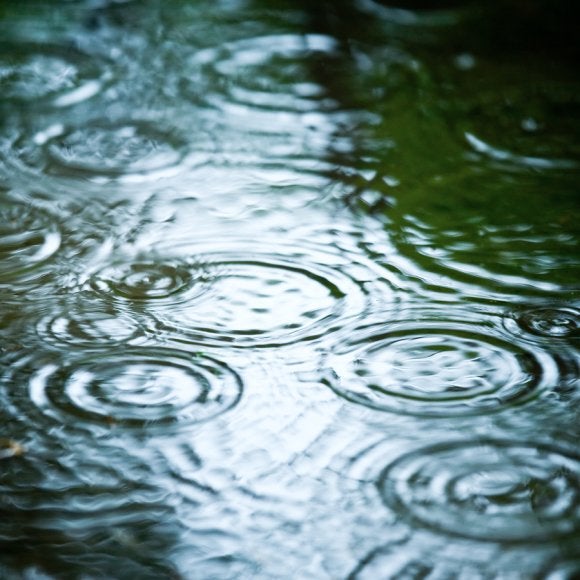
-
Reasons to Invest in a Sump Pump for Your Basement
Sump pumps in Baltimore can help to ensure that your basement stays dry after a heavy rainstorm. They’re particularly useful if you live in an area that is prone to floods or if you’ve had flooding issues in your basement before. By removing unwanted water from your basement, these pumps can help to protect your home from a whole host of problems such as water damage, and mold and mildew infestations. Here are some more reasons to invest in a sump pump for your basement. When you’re ready to purchase one, enlist the help of a trained professional.
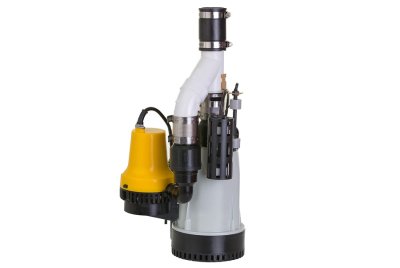
Reason 1: You Live in Area Where Flooding Is Common
Whether or not you need a sump pump in your basement is mostly contingent on where you live and where your house is situated. If you’re lucky and you’ve never had to deal with a flooded basement, you’re probably fine without a sump pump. However, if you have moisture issues in your basement or if there has ever been standing water in the space, you should invest in a sump pump. If you’re on a budget, be sure to try other waterproofing methods, such as using a dehumidifier, before resorting to buying a sump pump.
Reason 2: Sump Pumps Effectively Remove Water From Basements
If your basement is overly wet, have a sump pump installed. This small pump is usually placed in the lowest part of your home, which can your basement or a crawlspace. It keeps the area under your home dry by pumping out any water—moisture in the soil surrounding your home’s foundation, for instance—that drains into its sump pit. Before you have a sump pump installed, be sure to have your waterproofing professional repair any cracks or damage in your home’s foundation.
Reason 3: Peace of Mind
Even if you haven’t experienced flooding yet, you may still want to consider investing in a sump pump if your basement tends to be on the wet side, smells musty, or has signs of mold growth. If water intrusion is an annual issue, you should invest in several pumps, as well as a backup pump that’s water-powered, in case you experience a power outage that renders your main pump inoperable.
-
Discover How Water-Powered Sump Pumps Work
One way to ensure that you have a waterproof basement near Baltimore is to install a water-powered sump pump. This backup pump engages if your main sump pump malfunctions, or when power is cut off from your main sump pump, which could happen during a power outage due to a severe storm or heavy rains. Without a backup pump, you risk having to deal with a flooded basement and extensive water damage.
Watch this informative video to learn more about water-powered sump pumps, and to see an animation of how they work to extract water from basements without the need of electrical power sources.
-
How Mold and Mildew Can Affect Your Home and Health
Mold and mildew exist in every home, and are particularly prevalent in areas where moisture levels are high such as a kitchen, bathroom, basement, or crawlspace. If mold is allowed to grow uncontrolled, it can pose a serious health risk to you and your family. If you’re experiencing symptoms that may be mold-related, or you suspect that you may have a mold infestation in your home, contact a trained professional who specializes in basement and crawlspace waterproofing, mold inspection, black mold removal, and home mold remediation in Baltimore .
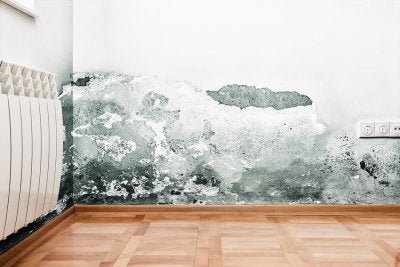
The Difference Between Mold and Mildew
Though both are fungi and closely related, mold and mildew are morphologically different. For example, mold can occur in a range of colors that include black, gray, green, red, and orange. Mildew, on the other hand, only occurs in varying shades of white, and tends to grow on the surface of things, which makes it relatively easy to clean up. Mold can grow aggressively into whatever media it’s attached to, and it’s more difficult to get rid of.
Symptoms of Mold and Mildew Exposure
Of the two fungi, mold can be more toxic. Mildew exposure can cause headaches, coughing, sore throat, sneezing, and breathing problems. Mold exposure includes all the symptoms of mildew exposure, and: sinus infections, migraines, allergic reactions, rashes and hives, inflammation and pain in joints, depression, extreme fatigue, pneumonia, and potential death.
Common Types of Mold Found in Homes
There are three types of mold that can be found in homes. The first, and most common, is Aspergillus . It can be found in the soil, growing on fruits and vegetables, and growing on nutrient-poor items such as plastic, glass, and concrete. Aspergillus is the least harmful to your health—people who are sensitive may develop allergic reactions. Cladosporium is another common mold found in homes, and can occur on household surfaces such as wallpaper, carpet, wood, insulation, and HVAC fans. The last, and most dangerous, is the infamous black mold ( Stachybotras chartarum ). Black mold grows readily on materials that have a lot of cellulose in them like gypsum board, paper, drywall, and dust. If you suspect you may have black mold in your home, contact a mold removal expert immediately.
-
Signs You Could Have a Problem With Crawl Space Moisture
Crawlspace waterproofing is among the most important services that you can schedule for your home. If you are wondering whether your home is in need of crawlspace waterproofing , you may want to inspect your property for the signs of crawl space moisture. There are several signs and symptoms that can point to the presence of excess moisture in your crawlspace. For example, you may notice excessive cracks or other forms of damage to your basement. Additionally, you may find that your home’s foundation appears wet or soggy. When crawlspace moisture is left to sit for too long, you may also find the signs and symptoms of rot or mold. A damp crawlspace may also create unpleasant musty odors throughout your basement space. With the assistance of a company offering crawl space dehumidifier and crawl space encapsulation in Baltimore, you can rest assured that moisture will not affect the safety or condition of your indoor spaces.
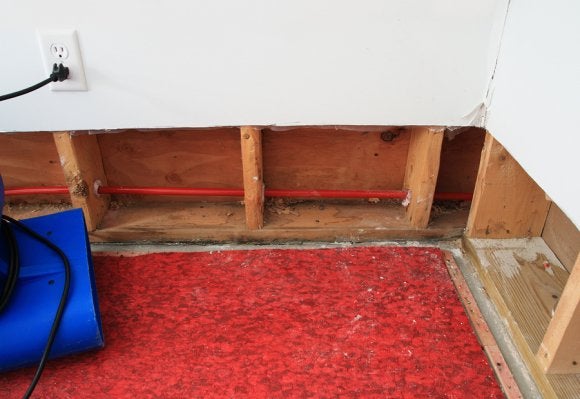
-
The Link Between Mold and Allergies
When you or a loved one suffers from allergies at home, there could be a chance that your household has a black mold issue. In fact, black mold is among the most common allergens found on Earth. After you schedule black mold removal for your basement, you may notice a relief in many of your indoor allergy symptoms. Some of the common black mold allergy symptoms include respiratory problems, sinusitis, and other health issues.
For help with any mold remediation needs, contact a company offering basement waterproofing and mold removal near Baltimore. By setting up mold removal for your home, you can help to relieve your allergy symptoms. To take a closer look at the link between mold and allergies, be sure to check out this video.
-
Factors that Increase Your Risk of Basement Water Damage
The winter season has arrived in Baltimore, and it is important to make sure that your home is protected from water damage. A flooded basement can result in significant damage to your home, ranging from moisture issues to mold growth and more. With the help of a company offering basement waterproofing serving Baltimore , you can rest assured that you will not be in need of mold remediation or other emergency waterproofing basement procedures. To help you determine whether your home is in need of basement waterproofing, here is an overview of some of the factors that may increase your risk of water damage in your basement.
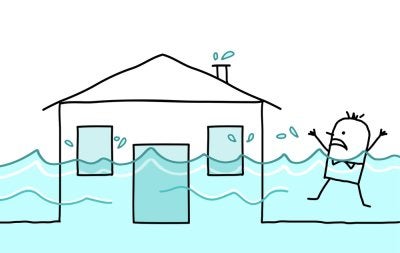
Extreme Weather Conditions
Oftentimes, basement flooding is caused by extreme weather conditions. For example, when your area is subjected to a heavy rainstorm, rainwater could begin pooling around your foundation. If your foundation has not been properly sealed, this water could begin to leak into your basement. To protect your home against rain related water damage, it is a good idea to schedule basement waterproofing services before the start of the storm season.
Improper Property Grade
The grade of your property is a term that describes the overall slope of your yard and foundation. Ideally, your property grade should slope evenly away from your foundation and basement. In the event that your grade slopes towards your foundation, you may find that your basement experiences flooding after a rainstorm. Water pooling around your foundation is a top sign that you may have property grade issues.
Sewer Backups
A sewer backup is a home emergency that can cause significant flooding to your basement. When your sewer backs up, wastewater could begin to enter your basement’s indoor spaces. To prevent a sewer backup from damaging your home, it is a good idea to schedule regular plumbing services. Your plumber can identify whether your sewer line is at risk of clogging or breaking. By keeping track of the main causes of basement flooding, you can avoid a water damage emergency this winter.
-
Answering Common Questions About Crawl Space Moisture
While your crawl space may not concern you on a day-to-day basis, it is important to be on the lookout for the signs of crawl space moisture. By scheduling crawlspace waterproofing in Baltimore, you can prevent moisture from damaging your foundation, basement, and other areas of your home. Some of the common crawlspace waterproofing techniques are crawl space encapsulation and the installation of a crawl space dehumidifier. Read on for answers to some of the most common questions about crawl space moisture.

What Causes Crawl Space Moisture?
When you are dealing with crawl space moisture issues , you may be wondering what has caused your water problem in the first place. There are two common culprits of crawl space moisture. Sometimes, wetness in a crawl space can be caused by flooding rainwater. Additionally, crawl space moisture can also be related to plumbing issues throughout the home. Your crawl space waterproofing technician will be able to pinpoint the cause of your moisture problem.
Why Is Crawl Space Moisture a Concern?
Since the crawl space is one of the least accessible parts of a home, it may not be clear as to why it is important to waterproof this area. In fact, moisture in a crawl space can lead to structural problems in your home’s foundation and other critical areas. Additionally, a damp crawl space can also lead to a mold infestation throughout your home. When you suspect that your crawl space may have excess moisture, you should not hesitate to address the issue.
How Can Crawl Space Moisture Be Repaired?
There are several different methods that can be used to repair moisture in a crawl space. First, your technician will need to gain access to the crawlspace vapor barrier. Once the vapor barrier has been removed, a sump pump will be used to remove any excess water from the crawl space. Once the crawl space has been completely dried, the vapor barrier will be reinstalled.
-
Sump Pumps 101
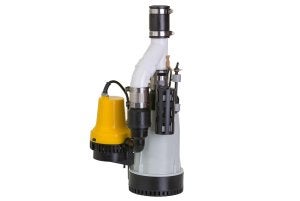 The sump pump is one of the most important pieces of equipment for preventing severe water damage to a property. The sump pump is a small pump installed in the low part of a basement or crawlspace. It collects water that flows into the sump pit, pumping it away from the building to keep the building dry and prevent flooding. To learn more about sump pumps near Baltimore , read on. And for quality sump pump repair, replacement, or installation, contact Storm Waterproofing.
The sump pump is one of the most important pieces of equipment for preventing severe water damage to a property. The sump pump is a small pump installed in the low part of a basement or crawlspace. It collects water that flows into the sump pit, pumping it away from the building to keep the building dry and prevent flooding. To learn more about sump pumps near Baltimore , read on. And for quality sump pump repair, replacement, or installation, contact Storm Waterproofing.Flooded Basements
The American Society of Home Inspectors found that more than 60 percent of homes in the United States experience below-ground wetness. Knowing this, it’s not surprising that most homeowners have to deal with water in the basement at some point. Unfortunately, water can cause extensive property damage, and may require home mold remediation.
How a Sump Pump Works
A sump pump is placed in the sump pit, a hole located in the lowest part of the basement or crawlspace that is approximately two feet deep. When water starts to fill the pit, a pressure sensor turns the pump on. This pulls the water out of the sump pit and relocates it to a drain spot away from the foundation. The pipe is oftentimes equipped with a check valve that keeps water from flowing back into the sump pit. Most sump pumps use a centrifugal pump to relocate water. The motor causes the impeller to turn, which pushes the water to the sides of the pipe and creates a low-pressure area in the center. Water from the sump pit is pulled to this area to fill the pressure void.
Sump Pump Design
There are two types of sump pumps. Submersible pumps sit in water, protected by waterproof housing. When the pump turns on, it sucks water through the gate and into the pipe, which routes it to an area outside of the home. Pedestal pumps, on the other hand, are located away from the water, even when the pit is full. These pumps are louder, but less expensive, than submersible pumps.
-
Understanding the Complexity of Mold Removal
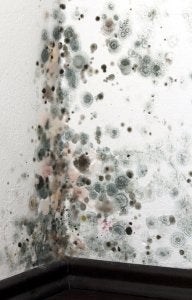 Having mold on your property can lead to health problems and even property damage. If you notice any signs of mold growth in your home, schedule mold remediation in Baltimore right away. Continue reading to learn more about the involved process of mold removal, and why it requires professional equipment and training.
Having mold on your property can lead to health problems and even property damage. If you notice any signs of mold growth in your home, schedule mold remediation in Baltimore right away. Continue reading to learn more about the involved process of mold removal, and why it requires professional equipment and training.Before removing mold, a home mold remediation expert will put on protective gear and thoroughly inspect the home for signs of mold growth. Once areas of mold growth are identified, they must be isolated from other areas of the home before mold cleaning can begin. Otherwise, the process of cleaning mold in one area of the house can cause mold to simply migrate to other areas of the home. In worst cases, mold can start growing in a home’s HVAC system and ductwork. This allows mold spores to be circulated throughout the home, which encourages mold growth in other areas of the home. After cleaning the mold, a mold removal expert will apply a treatment that can limit or prevent future mold growth.
